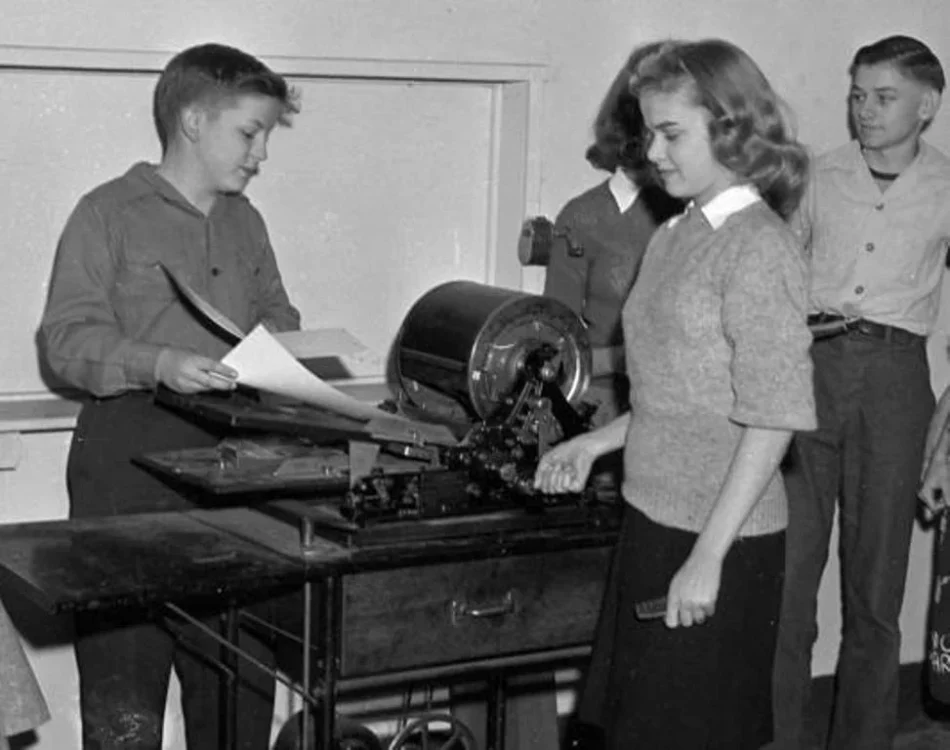Who knew?
By Paul McGowan From PS Audio

Long before the photocopier was a thing, back in the day when Elvis was king, and cars were faster because of their sculpted wings, and meaner because of their toothy chrome grins, we school children were getting high on the smell of the mimeograph machine.
Remember it? Some of you are too young to have gone through this rite of passage, but for those of you that revelled in the sweet and heady smell of the test papers with purple letters, you’ll never forget.
Not sure what prompted this memory but I began to wonder what the heck it was we were all smelling, so I turned to my old buddy, ChatGPT and asked.
The distinct smell associated with mimeograph machines comes from the solvents used in the duplicating process. The main chemical responsible for the odor is methanol (methyl alcohol), which was a key component of the duplicating fluid used in these machines.
The mimeograph duplicating fluid typically contained a mixture of:
- Methanol
- Isopropanol (isopropyl alcohol)
- Ethylene glycol
- Water
- Dyes (usually purple, but sometimes other colors like black, blue, or red)
When the mimeograph machine was used to create copies, the duplicating fluid would be forced through a stencil onto the paper. As the fluid came into contact with the air, the methanol and other solvents would evaporate, leaving behind the ink on the paper and releasing the characteristic odor into the room.
The combination of these chemicals, particularly the methanol, created the unique and pungent smell that many people associate with mimeograph machines and the copies they produced.
Now you know.
SOURCE: PS AUDIO
Grab a copy of my new book! The Aurora Project
Get my memoirs, 99% True
Watch Today’s video





